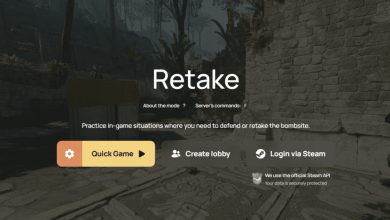What Is a Case Study and Why Do People Use Them?

In a world filled with information, people often look for stories that cut through the noise and provide proof of what works. That’s where case studies come in. They are more than just documents; they are narratives that explain how problems were solved, what processes were followed, and what outcomes were achieved. Today, many businesses and professionals turn to a case study writing service to create structured, compelling accounts of real-world challenges and results. But beyond the business setting, case studies are also used in education, healthcare, and research—making them versatile tools across many fields.
In this article, we’ll explore what case studies are, why they matter, and the many reasons people use them to share knowledge, teach lessons, and build credibility.
Understanding What a Case Study Really Is
At its core, a case study is an in-depth examination of a single subject: it could be a company, a person, a group, or even an event. Instead of looking at data broadly, case studies zoom in to explore specific circumstances, decisions, and results.
Unlike a quick summary or a press release, a case study dives deep into details. It examines the “why” and the “how,” not just the “what.” For example, in business, a case study might explain how a marketing campaign led to a 50% increase in sales. In healthcare, it could illustrate how a new treatment helped a patient recover. And in education, it might showcase how a teaching method improved learning outcomes.
Key elements often included in a case study are:
- Background: A snapshot of the problem or situation.
- Challenge: What obstacles needed to be overcome?
- Solution or Action: The steps taken to address the problem.
- Outcome: The measurable or observable results.
- Lessons Learned: Insights that can help others in similar situations.
By combining facts with storytelling, case studies help people understand not just results but the journey behind them.
Why People Use Case Studies in Business
When most people think of case studies, they think of business—and for good reason. Case studies have become one of the most trusted forms of content for companies to explain their value. Instead of abstract claims, they provide proof.
Proof of Concept
A company can say their product or service works, but potential customers often want evidence. A well-crafted case study shows real results, which builds trust.
Education for Prospects
Case studies act as teaching tools. They don’t just show results; they walk readers through the steps of how success was achieved. Prospective clients can see how a product or service might apply to their own situation.
A Sales Tool Without the Sales Pitch
Unlike a brochure or an ad, a case study doesn’t feel like marketing. It’s more like storytelling supported by data. This makes it particularly effective in industries where decision-makers want evidence before committing.
Building Credibility
Every case study adds to a company’s reputation. By showing consistency across multiple examples, a business demonstrates that their success isn’t a one-time fluke but a repeatable process.
The Role of Case Studies in Education and Research
While businesses use case studies to persuade, schools and researchers often use them to teach and explore.
In Education
In classrooms, case studies help students learn by analyzing real-world examples. Instead of just reading theory, students see how theory applies in practice. Business schools, law schools, and medical schools frequently rely on case studies to train future professionals.
For instance:
- Law students might study a landmark case to understand how legal principles were applied.
- Medical students might examine a patient case to learn about diagnosis and treatment.
- Business students often dissect company case studies to analyze management decisions.
This hands-on approach helps learners think critically, problem-solve, and understand complexities beyond textbooks.
In Research
Researchers also use case studies to explore topics in depth. Instead of broad surveys, they focus on a single case (or a small group of cases) to uncover insights. Case studies in psychology, sociology, and public policy often reveal patterns or behaviors that would be hard to capture in other formats.
Personal and Healthcare Applications
Case studies are not limited to boardrooms or classrooms; they also play a crucial role in personal and healthcare settings.
In Healthcare
Medical professionals use case studies to share knowledge about unique or rare conditions. A case study might describe how a patient with unusual symptoms was diagnosed and treated, helping other doctors learn from the experience. They also allow researchers to test hypotheses and gather data for future studies.
In Personal Development
Individuals sometimes create personal case studies, documenting how they overcame obstacles, improved habits, or achieved goals. These stories can inspire others and provide practical roadmaps for change.
In Nonprofits and Public Policy
Organizations tackling social issues often use case studies to show how interventions make an impact. For example, a nonprofit might publish a case study on how a community program reduced food insecurity or improved education outcomes.
Why Case Studies Work: The Psychology Behind Them
Case studies are effective because they connect with how people process information. Humans are naturally drawn to stories, and case studies present information in a narrative format.
Storytelling Builds Engagement
When people read a case study, they often see themselves in the story. This relatability makes the information more engaging and memorable.
Evidence Builds Trust
Data and outcomes in a case study give credibility. People want facts to back up stories, and case studies combine both.
Specificity Makes It Believable
General claims like “our customers are happy” don’t resonate. But when a case study shows how a company helped a client reduce costs by 30% in six months, the claim feels real and persuasive.
Lessons Inspire Action
By ending with insights or takeaways, case studies encourage readers to apply what they’ve learned to their own situations.
Conclusion
Case studies are versatile tools used across industries and disciplines. They tell stories of challenges, solutions, and outcomes in a way that is both informative and persuasive. Whether it’s a company proving its value, a school teaching students, a researcher analyzing data, or a doctor sharing insights, case studies help people understand complex situations through real-world examples.
In a fast-paced world full of marketing messages and data overload, case studies cut through by combining storytelling with evidence. That’s why people continue to use them—and why their role will only grow in importance as decision-makers look for proof, not promises.





